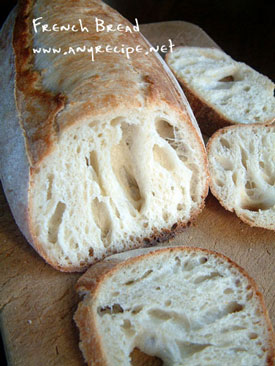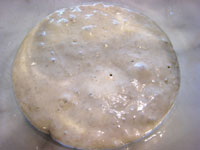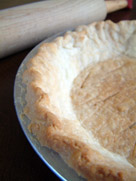- AMERICAN
- Chicken Casserole
- Chicken Salad Sandwiches new
- Chili
- Macaroni and Cheese
- Scalloped Potatoes and Ham
- Seasoned Hamburgers
- Stuffed Cabbage
- See also:
- Chicken Noodle Soup
- Mrs. Fields Chocolate Chip Cookies
- Rainbow Finger Jello
- Scalloped Corn
- Steak with Wine Sauce
- APPETIZERS
- Crab Dip
- Potato Corn Cakes
- Potato Spring Rolls
- Spinach Dip
- See also:
- Guacamole
- Pico de Gallo (Salsa)
- Taco Dip
- Tomato Salsa new
- Tsukune (Teriyaki Meatballs) new
- ASIAN
- BREAD
- Bread Rolls new
- Cinnamon Rolls
- Cranberry Bread
- French Bread
- Hazelnut Wheat Bread
- Hisako's Killer Rolls
- Multi-Grain Bread
- Raisin Bread
- Panettone
- Pesto Cheese Rolls
- Pumpkin Nut Bread
- Pumpkin Bread with Cranberries
- Sourdough Bread
- See also:
- Artichoke Pizza
- Banana Bread
- Chinese Steamed Buns
- Garden Pesto Pizza
- Mexican Cornbread
- Orange Nut Muffins
- Sweet Cornbread
- Zucchini Bread (No Oil)
- DESSERT
- ITALIAN
- Bell Pepper Pasta Salad
- Eggplant Parmesan
- Pesto Sauce
- Pizza (Artichoke)
- Pizza (Garden Pesto)
- Pizza (Sun-Dried Tomatoes)
- Portobello Mushroom Pasta
- Red Bell Pepper and Mozzarella Salad
- Salmon Pasta
- Seafood Spaghetti
- Spinach Lasagna new
- Sun-Dried Tomatoes
- Toasted Eggplant Parmesan
- Tomato Sauce
- Tortellini and Smoked Salmon Salad
- Tortellini with Basil Sauce
- Zucchini with Sun-Dried Tomatoes
- See also:
- Amaretti
- Minestrone
- Tiramisu
- MEAT & POULTRY
- Chicken Kebab
- Cilantro Parsley Chicken
- Honey Mustard Chicken
- Yogurt Salmon
- Roast Chicken
- Salmon Teriyaki new
- Steak with Wine Sauce
- See also:
- Beef Omelette new
- Beef Stew new
- Char Siu (Barbecue Pork)
- Chicken with Cantonese Marinade
- Korean Barbecue
- Lemon Chicken
- Seasoned Hamburgers
- Tandoori Chicken
- Tsukune (Teriyaki Meatballs)
- MEXICAN
- SALAD
- Almond Tomato Salad
- Broccoli Salad
- Chinese Chicken Salad
- Coleslaw with Peanuts and Cilantro
- Creamy Italian Dressing
- Cucumber and Zucchini Salad
- Falafel Salad
- Fruit Salad Dressing
- Peanut Dressing
- Pineapple and Cheese Salad Mold
- Sesame Shoyu Dressing new
- Spinach Salad
- Three Bean Salad
- Tofu and Yogurt Dressing
- See also:
- Bean Sprouts
- Bell Pepper Pasta Salad
- Chicken Salad Sandwiches new
- Red Bell Pepper and Mozzarella Salad
- Taco Salad new
- Tortellini and Smoked Salmon Salad
- SOUP
- VEGETABLE
- Asparagus with Pine Nuts
- Baked Summer Vegetables new
- Crispy Potato Slices new
- Cucumber with Wakame
- Eggplant with Curry Dressing
- Green Beans with Hoisin Sauce
- Potato Corn Cakes
- Red Bell Pepper Paste
- Scalloped Corn
- See also:
- Bean Sprouts
- Green Beans with Sesame
- Pea Shoots with Garlic
- Potato Spring Rolls
- Red Bell Pepper and Mozzarella Salad
- Spinach with Sesame Dressing
- Toasted Eggplant Parmesan
- Zucchini with Sun-Dried Tomatoes
- INDEX
- Bread Rolls new
- Cinnamon Rolls
- Cranberry Bread
- French Bread
- Hazelnut Wheat Bread
- Hisako's Killer Rolls
- Multi-Grain Bread
- Raisin Bread
- Panettone
- Pesto Cheese Rolls
- Pumpkin Nut Bread
- Pumpkin Bread with Cranberries
- Sourdough Bread
- See also:
- Artichoke Pizza
- Banana Bread
- Chinese Steamed Buns
- Garden Pesto Pizza
- Mexican Cornbread
- Orange Nut Muffins
- Sweet Cornbread
- Zucchini Bread (No Oil)

How to make French bread (Part 1):
How to make French bread (Part 2):
Ingredients for the poolish:
- 3/4 cup (100 g) all-purpose flour
- a pinch of instant yeast
- 1/3 cup and 1 tablespoon (85 g) water
Ingredients for French bread:
- poolish
- 1 1/3 cups (175 g) all-purpose flour
- 1/8 teaspoon instant yeast
- 2 teaspoons sugar
- 1 teaspoon salt
- 1/3 cup and 1 tablespoon (85 g) water
- a little vegetable oil
Making the poolish:
- In a mixing bowl, mix 3/4 cup (100 g) all-purpose flour and a pinch of instant yeast.

A pinch of yeast, shown in a 1/2 teaspoon for context.
- Add 1/3 cup and 1 tablespoon (85 g) of water and mix until the flour is incorporated.
Cover the mixture with plastic wrap. Let it rise at room temperature for 12 to 30 hours.
You can use a warm oven to speed up the rising process. Let it rise until it becomes bubbly.
After it becomes poolish, you can refrigerate it until you decide to make the French bread,
but try to use it within 10-12 hours.

This is poolish. You can see the bubbles.
Making French bread with the poolish:
- Add 1/3 cup and 1 tablespoon (85 g) of water to the poolish and mix gently.
- In a separate bowl, mix 1 1/3 cups (175 g) of all-purpose flour, 1/8 teaspoon instant yeast, 2 teaspoons sugar and 1 teaspoon salt.
- Add the poolish to the flour mixture and mix with your hands. The mixture should be sticky, but if it is too sticky, add a little bit more flour.
- Knead the dough for 7 minutes.
- Oil a clean mixing bowl, then place the dough in the bowl. Cover the bowl with plastic wrap. Let the dough rise for 2 hours at 80�F (30�C), and during that 2 hour span you must deflate the dough 3 times (every 30 minutes or so). To deflate the dough, take the dough out of the bowl, stretch the dough and fold it a couple of times.
- Oil the surface where you plan to shape the dough; you can use a metal baking sheet. Place the dough on the surface and shape that into an even oval shape. Cover the dough with plastic wrap and leave it for 20 minutes at 80�F (30�C).
- Fold the dough along its length towards the center and press it into the center. Then fold the
opposite side towards the center and press it into the center.

- Then fold both edges towards the center and pinch it together along the length.

- Roll the dough onto a heavily floured cloth. Pin the ends of the cloth together with clothespins.
This will help keep the shape and moisture of the dough during the proofing process.

- Cover with a plastic sheet and let it rise for 30 minutes in a warm oven at 85�F (32�C), then move the dough to the counter so that you can start preheating the oven. Place your baking stone in the oven and preheat the oven to 475�F (245�C). To ensure that the baking stone is hot enough, let it sit in the oven for at least 10 minutes. A well-heated baking stone helps to expand the slit and it creates a lot of holes.
- Flip the dough onto a sheet of parchment paper. Using a razor, slit that dough lengthwise at least 1/2 inch deep and at a 45 degree angle. Lightly oil that slit with vegetable oil.
- Once the oven is preheated, carefully place the dough on the hot baking stone (this video shows how to transfer the dough to the hot baking stone). Then spray 4 pumps of water above the dough (not directly at it). This will help the bread to expand while it is baking. Bake at 475�F (245�C) for 7 minutes, 450�F (230�C) for 5 minutes, then 425�F (210�C) for the last 3 minutes.
- Remove the dough from the baking stone and place it on a rack to cool down. Let it cool down completely before you start slicing the bread.
Our Most Popular Recipes

 Print this recipe
Print this recipe

